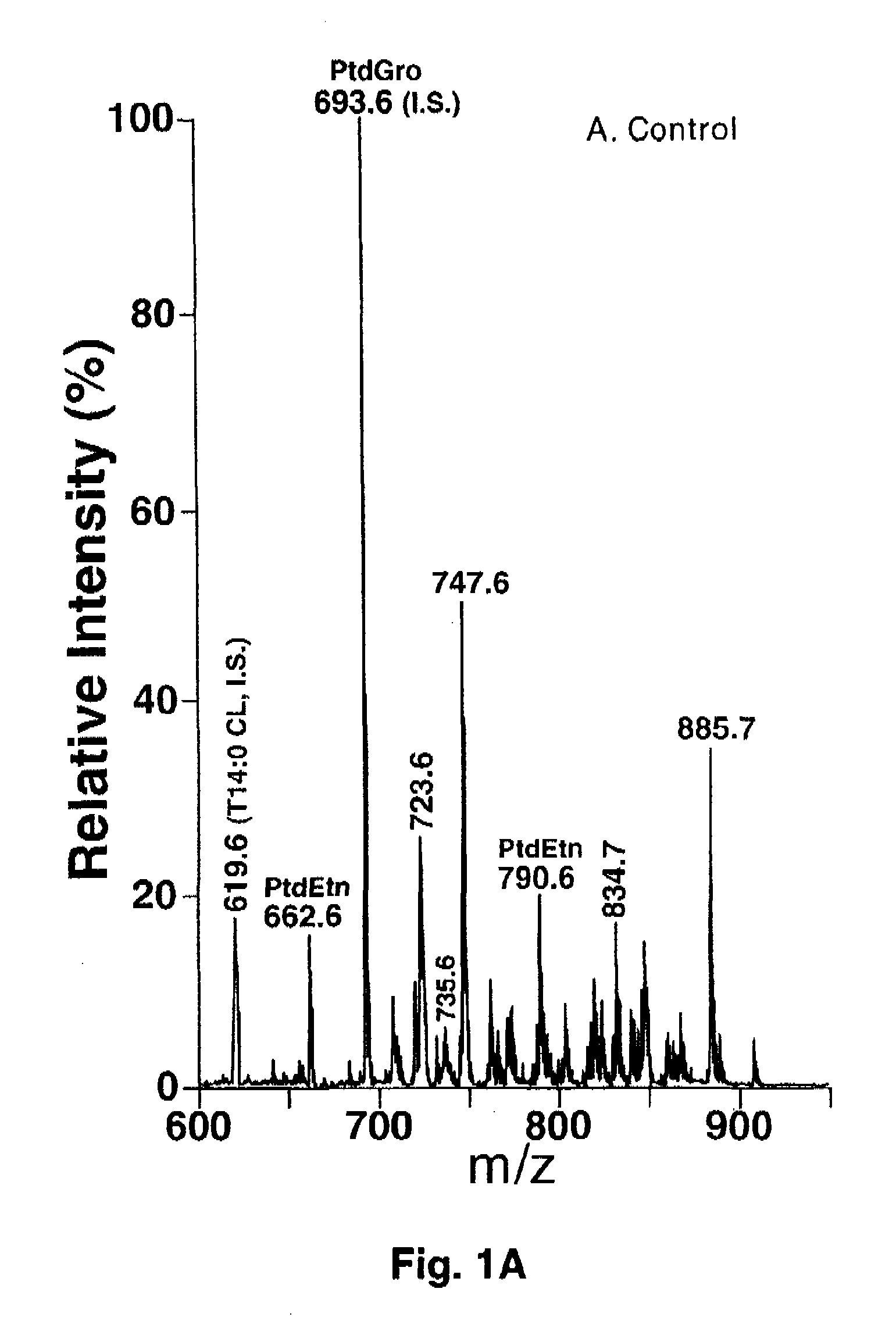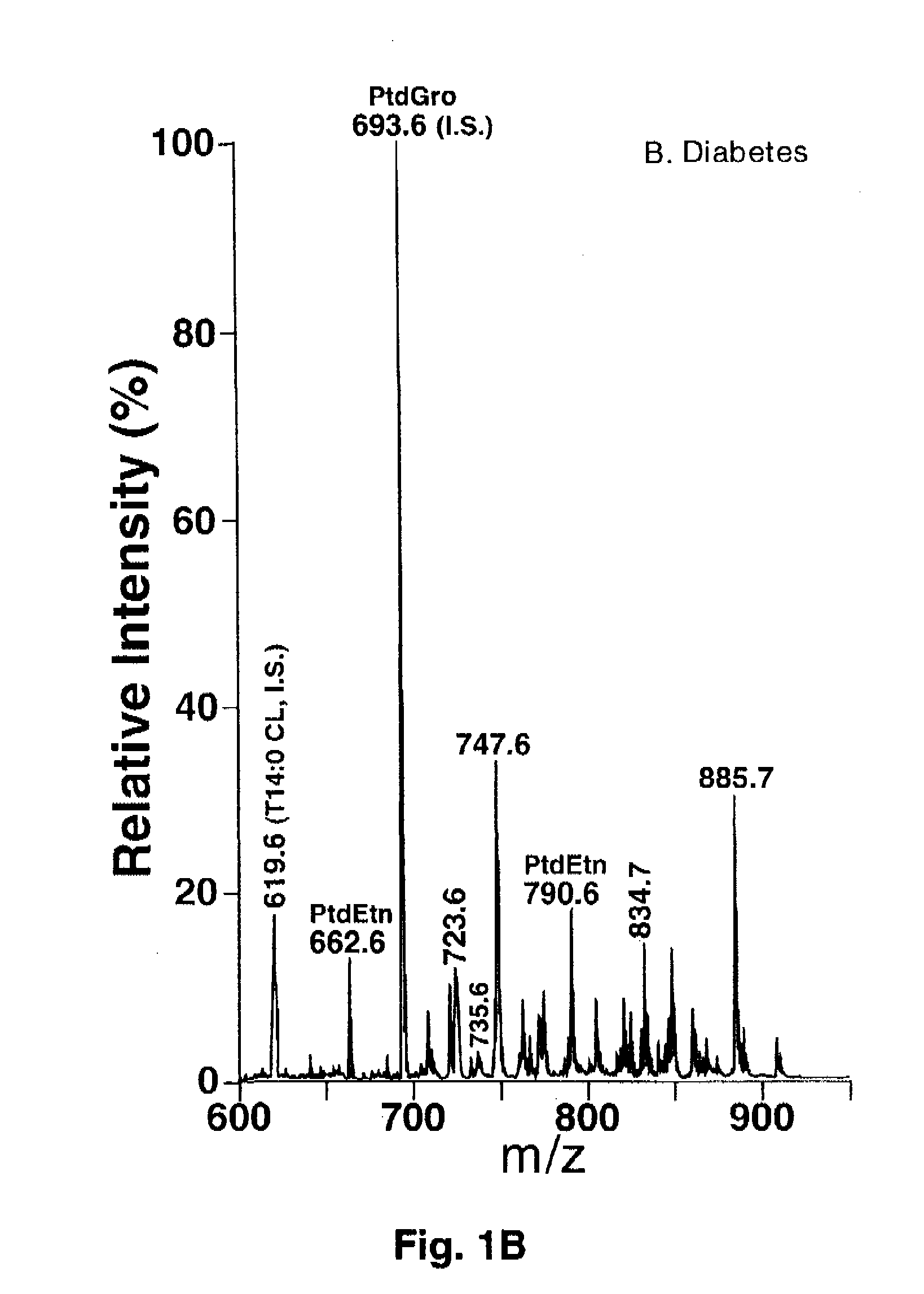Enhanced medical treatment in diabetic cardiomyopathy
a cardiomyopathy and medical treatment technology, applied in the field of diabetic cardiomyopathy, can solve the problems of mitochondrial dysfunction, inability to understand the chemical linkage between myocardial fatty acid and glucose substrate utilization in the diabetic state, and inability to identify new targets for pharmacologic inhibition,
- Summary
- Abstract
- Description
- Claims
- Application Information
AI Technical Summary
Benefits of technology
Problems solved by technology
Method used
Image
Examples
example
[0067] Materials. Synthetic phospholipids including 1,1′,2,2′-tetramyristoyl cardiolipin (T14:0 CL1), 1,2-dimyristoleoyl-sn-glycero-3-phosphocholine (14:1-14:1 PtdCho), 1,2-dipentadecanoyl-sn-glycero-3-phosphoethanolamine (15:0-15:0 PtdEtn), 1,2-dipentadecanoyl-sn-glycero-3-phosphoglycerol (15:0-15:0 PtdGro), 1,2-dimyristoyl-sn-glycero-3-phosphoserine (14:0-14:0 PtdSer), and 1-heptadecanoyl-2-hydroxyl-sn-glycero-3-phosphocholine (17:0 lysoPtdCho) were purchased from Avanti Polar Lipids, Inc. (Alabaster, Ala.). Deuterated palmitic acid (d3-16:0 FA) and triheptadecenoin (T17:1 TAG) were purchased from Cambridge Isotope Laboratories (Andover, Mass.) and Nu-Chek Prep, Inc. (Elysian, Minn.), respectively. Antibodies against Cytochrome c and ATP synthase β were purchased from BD Biosciences Pharmingen (San Diego, Calif.). Horseradish peroxidase linked secondary antibody and ECL™ western blotting detection reagent were from Amersham Bioscience (Piscataway, N.J.). Glycerol-3-phosphate oxida...
PUM
| Property | Measurement | Unit |
|---|---|---|
| Fraction | aaaaa | aaaaa |
| Fraction | aaaaa | aaaaa |
| Fraction | aaaaa | aaaaa |
Abstract
Description
Claims
Application Information
 Login to View More
Login to View More - R&D
- Intellectual Property
- Life Sciences
- Materials
- Tech Scout
- Unparalleled Data Quality
- Higher Quality Content
- 60% Fewer Hallucinations
Browse by: Latest US Patents, China's latest patents, Technical Efficacy Thesaurus, Application Domain, Technology Topic, Popular Technical Reports.
© 2025 PatSnap. All rights reserved.Legal|Privacy policy|Modern Slavery Act Transparency Statement|Sitemap|About US| Contact US: help@patsnap.com



